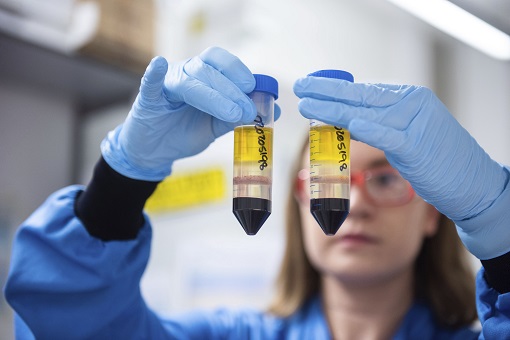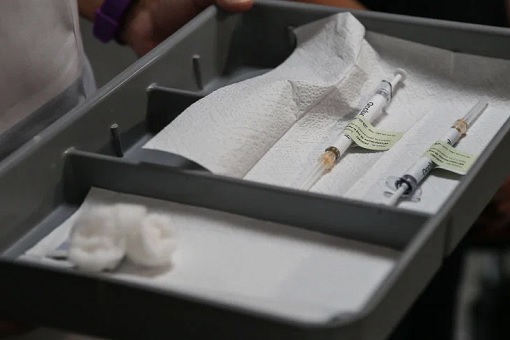When British pharmaceutical giant AstraZeneca announced on Monday that it too has developed a Covid-19 vaccine, celebration exploded – from the stock markets to lower and middle-income countries. Unlike Pfizer and Moderna’s effectiveness of 95% and 94.5% respectively, AstraZeneca’s vaccine has an average efficacy of 70%. The number may sound inferior.
But depending on More importantly, the vaccine is cheaper and easier for global manufacturing, storage and distribution across the world.
One regimen, given to nearly 8,895 people, showed 62% efficacy when given as two full doses at least one month apart.

Prof. Sarah Gilbert, one of Oxford’s vaccine scientists on the vaccine, said researchers are still trying to figure out why the half-dose regimen has shown to be more effective than a stronger dose. But the real reason is more than meets the eye.
On Wednesday (Nov 25), AstraZeneca and Oxford University admitted that its best results of 90% efficacy were due to a manufacturing error. The “half-dosage” that appeared to increase the vaccine’s effectiveness than a “full-dosage” is now described as an error called “serendipity” – an unplanned fortunate discovery. How did that happen in the first place?
Before the scientists begin their research, they would spell out all the steps to be taken, and how they plan to analyse the results. The original plan was for trial participants in Britain to receive two full doses. But when it was found that side effects, such as fatigue, headaches or arm aches were milder than expected, the scientists were surprised.

Mene Pangalos, head of AstraZeneca’s non-oncology research and development, said the team went back to check. They found out that some of the vials used in the trial didn’t have the right concentration of vaccine, resulting in some volunteers of the experiment received a half-dose instead of a full-dose. Apparently, they had underestimated the dose of the vaccine by half.
The Oxford University claimed that it discussed the problem with regulators, and agreed to proceed with the trial anyway. Eventually, the researchers administered two groups of volunteers – one with half a dose and another with the full dose as planned originally. Pangalos said – “In essence, that is how we stumbled upon doing half dose-full dose. Yes, it was a mistake.”
However, experts argue that the small number of participants (2,741 people) who were given the low dose of the vaccine makes it difficult to ascertain if the effectiveness is genuine. To make matters worse, none of the people in the low-dose group were over 55 years old – raising suspicion that younger volunteers with a stronger immune system produced an artificial promising results.

So the question is will a group of older volunteers produce the same 90% efficacy if given the same half-dose of vaccine? In the same breath, the so-called average effectiveness of 70% is no longer valid because the two groups had received different dosing levels. That’s because the experiment was from different doses as well as from two very different groups of participants.
Even though the methods for measuring the concentration of the vaccine have been corrected, a mistake AstraZeneca blamed on the contractor, the vaccine has received harsh criticisms. U.S.-based health care and biotech investment bank SVB Leerink, said – “We believe that this product will never be licensed in the U.S.”
John LaMattina, a former president of Pfizer Global R&D, tweeted – “Hard to believe that the FDA will issue an EUA for a vaccine whose optimal dose has only been given to 2,300 people. More data for this dosing regiment will be needed.” Chief of the White House’s Operation Warp Speed, Moncef Slaoui, has also expressed concern that the 90% efficacy was only shown for the lowest risk group.

However, AstraZeneca and Oxford University are defending the results and methods used in their phase three vaccine trials. The British pharmaceutical giant, insisting that “the studies were conducted to the highest standards“, said that the monitoring of their experiment was done by the independent Data Safety Monitoring Board (DSMB).
Some who defended AstraZeneca-Oxford has highlighted that the criticism seems to come primarily from within the United States – raising questions if the Americans were trying to prevent a British-developed vaccine from entering the U.S. market. Some also questioned whether American Pfizer and Moderna’s claims of 95% and 94.5% efficacy are genuine.
Outside of America, Oxford-AstraZeneca vaccine received praise prior to the latest revelation of manufacturing error. In addition to easier manufacturing, storage and distribution, the British vaccine is selling between US$3 and US$4 per dose while Pfizer-BioNTech vaccine would go for US$20 per dose and Moderna sells at US$32 to US$37 per dose.

Other Articles That May Interest You …
- AstraZeneca-Oxford Vaccine Shows 62% To 90% Effectiveness – Here’s Why This Could Be The Best Bet For Everyone
- Moderna Reveals Covid Vaccine – Here’s How This 94.5% Effective Vaccine Differs From Pfizer’s Vaccine
- Covid-19 Vaccines Hit Roadblocks – In 24 Hours, Eli Lilly And Johnson & Johnson’s Trials Suspended Over Safety Concerns
- Russia Reveals “Sputnik V” – But Scientists Condemn The Coronavirus Vaccine As Risky, Dangerous & Could Backfire
- How Vietnam Won The Coronavirus War And To Emerge The Biggest Winner In Economic Growth In Southeast Asia
- 3 Coronavirus Variants Discovered – Surprisingly, “Type-A” Found In Americans, Wuhan’s Type-B And Type-C In Europe
- The World Is Working On 20 Coronavirus Vaccines – But It Could Take Up To 18 Months
- China Appears To Be Winning The Coronavirus War, And Other Countries Are Studying How The Chinese Did It
- Arabs Conspiracy Theories – Coronavirus Is The U.S. & Israel Biological Warfare To Cripple China’s Economy & Reputation

|
|
November 26th, 2020 by financetwitter
|


|

|

|

|

|

|




























Didn’t I say earlier all the talk about vaccines is a pile of bollocks, no need to get excited and wet yourselves, Malaysians?
With the latest news I should say it’s an even bigger pile of gigantic bollocks!
Still, it won’t be any problem flogging the nonsense vaccines, Malaysia is a nation of kiasu and kiasi hypochondriacs, Malaysian economy thrives on that, every street in every area has its fair share of shops with every miracle cure.
Every other Malaysian is a qualified bomoh with expertise in running pyramid sales scheme.
Any Malaysians reading this should capitalise on Malaysia’s proprietary paranoid monopoly on fear of sickness and death, buy up all the stock of quack vaccines, make a good killing as you make Malaysia great again by killing all our kiasu and kiasi, Amen.
BTW, buy up all the old coffin-on-four-cheap-tyres Protons, the ones that haven’t killed their drivers and passengers, recycle them for use as proper coffins, you’ll make another killing.